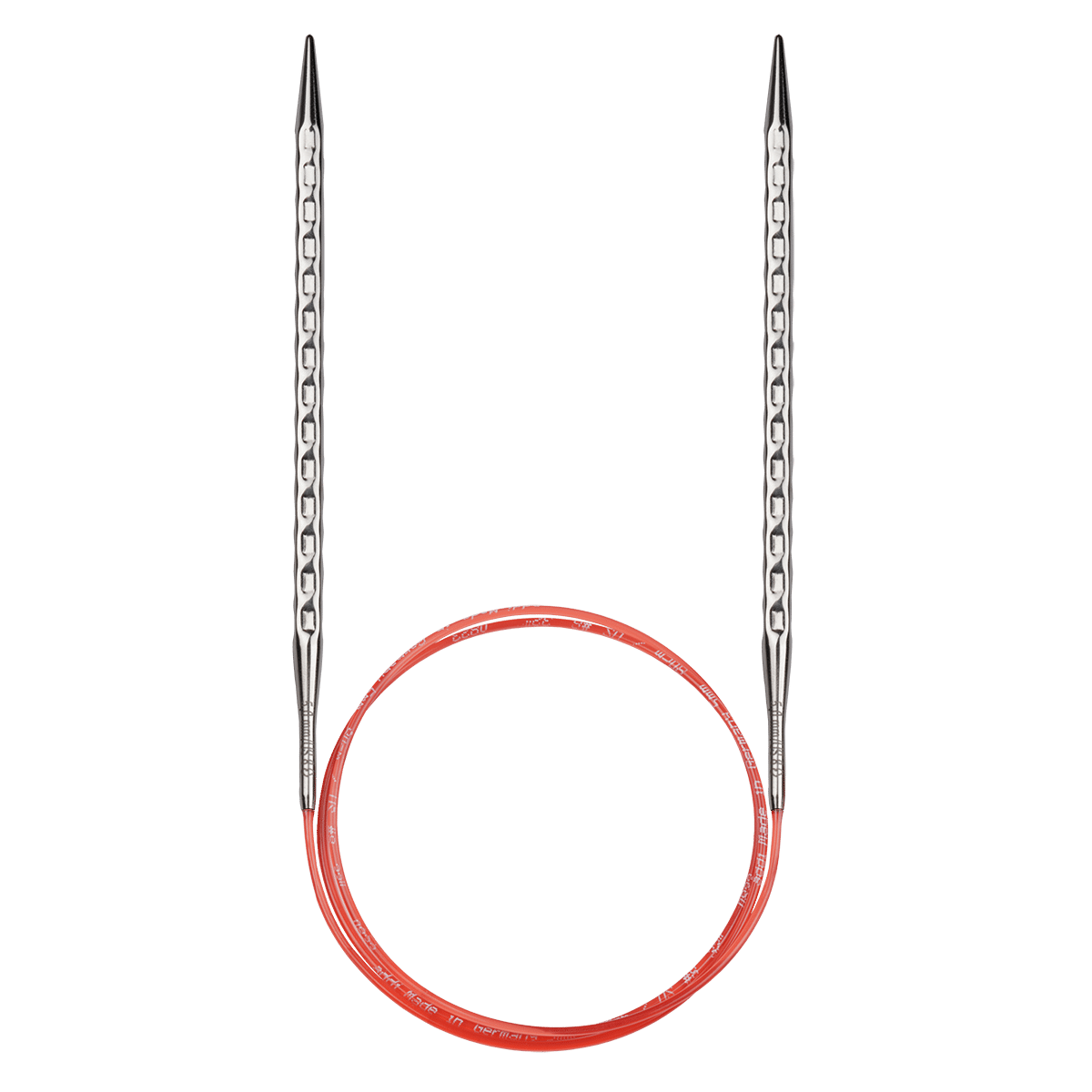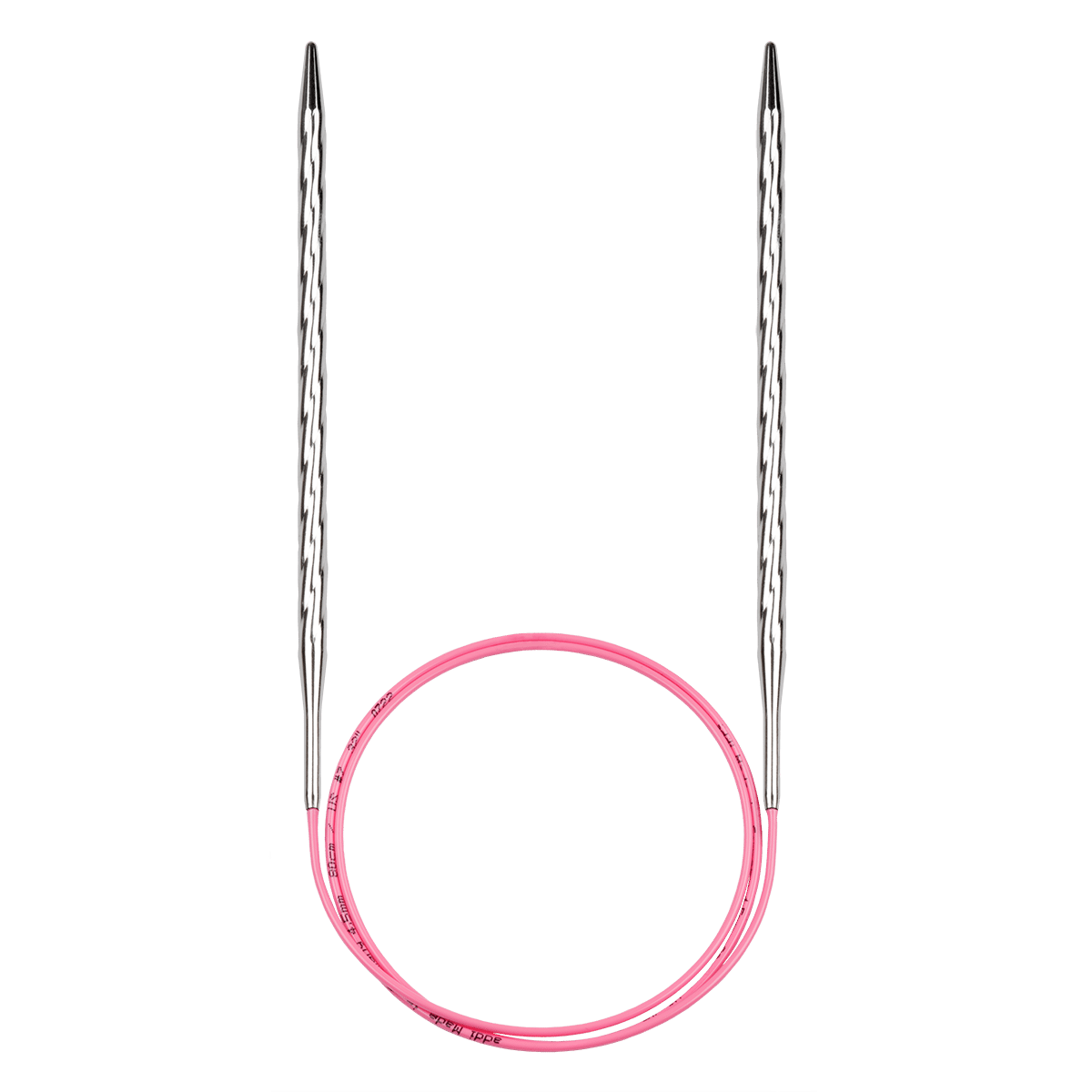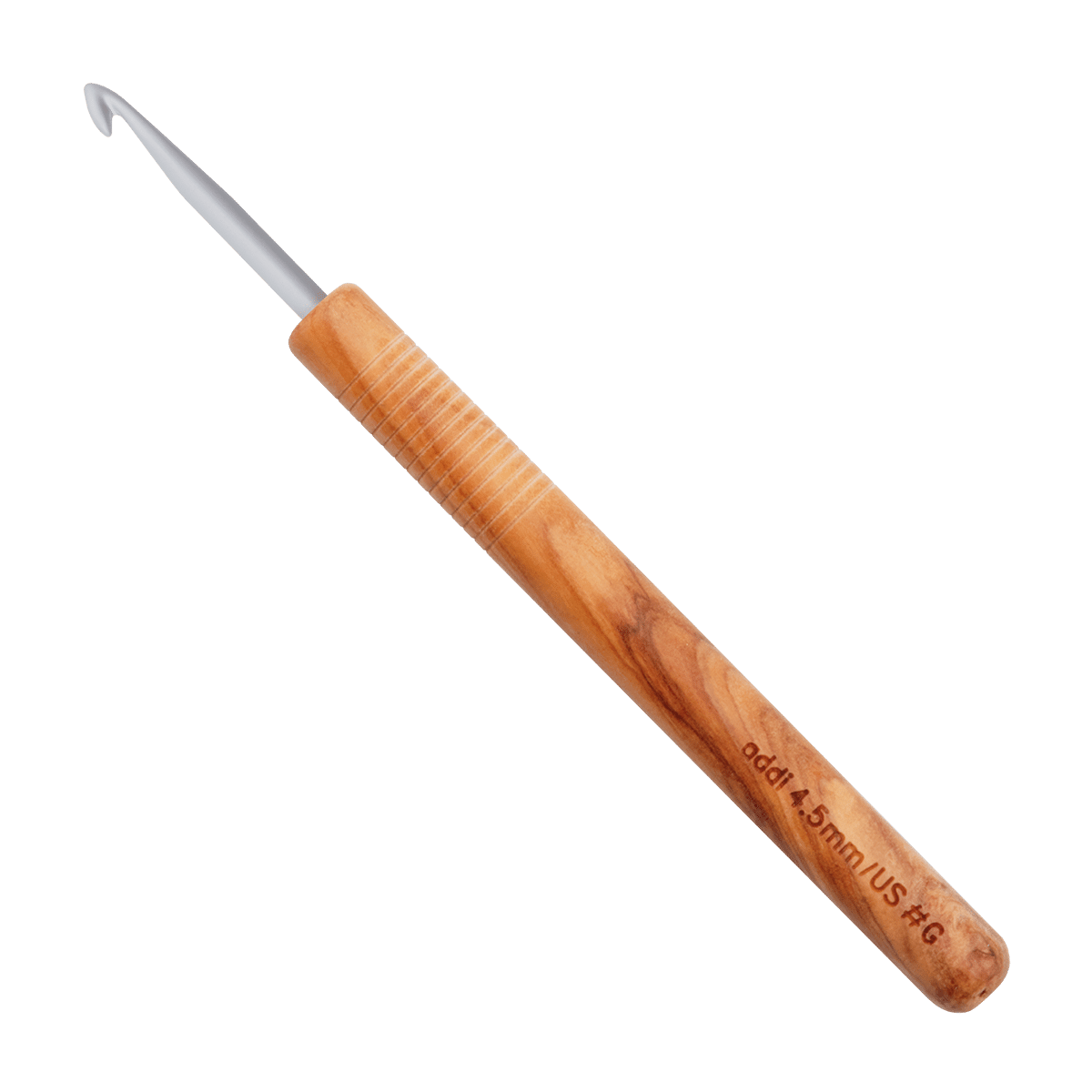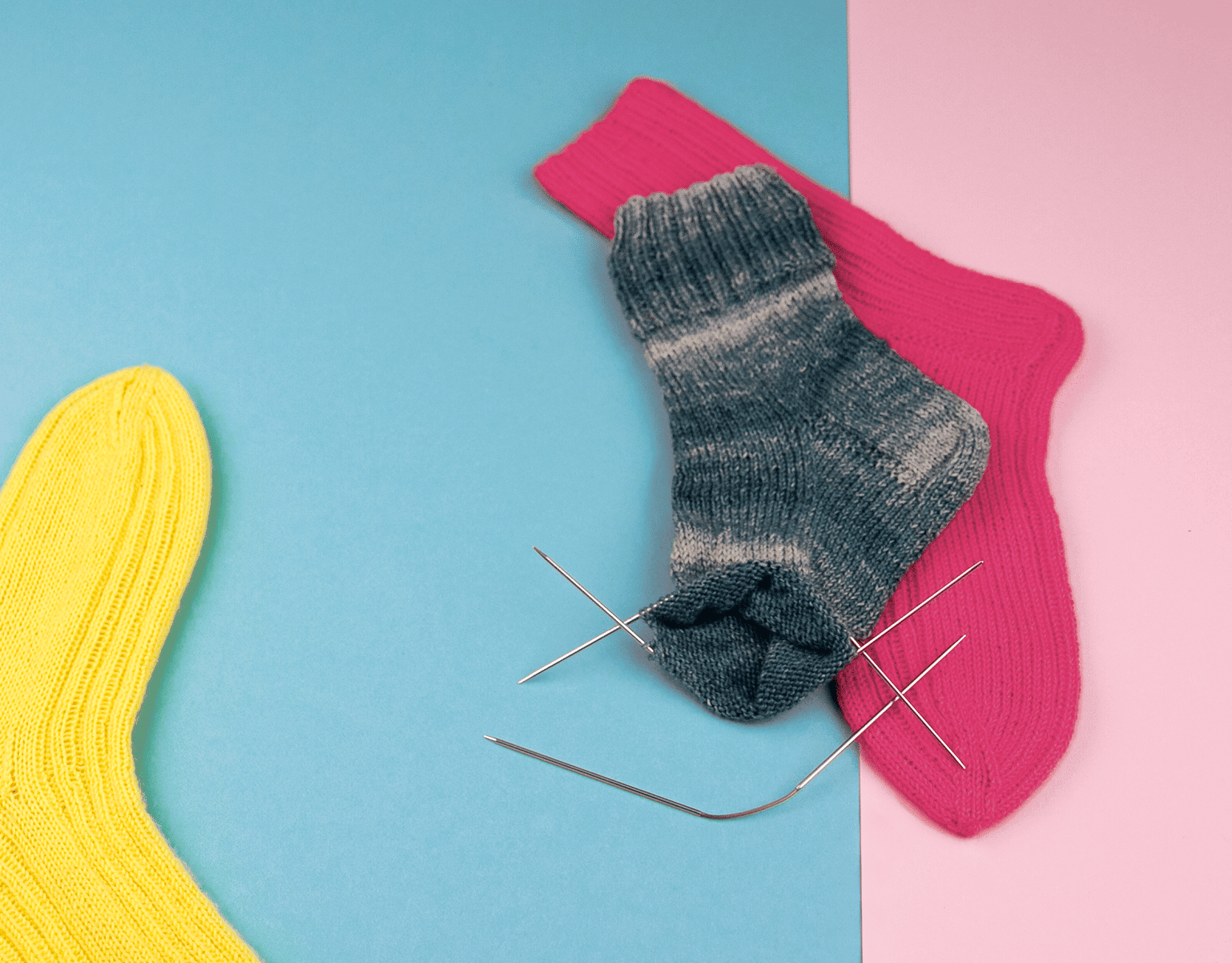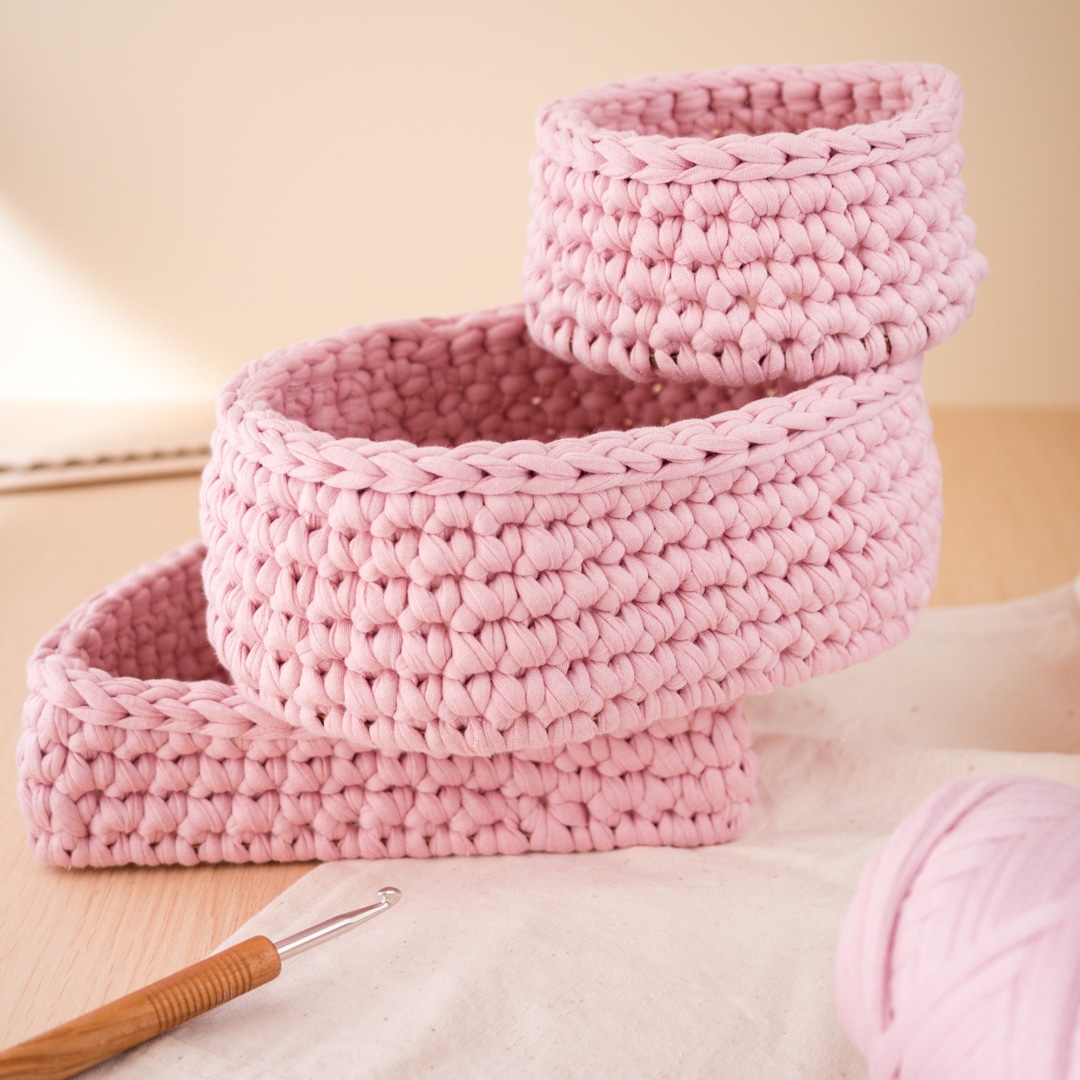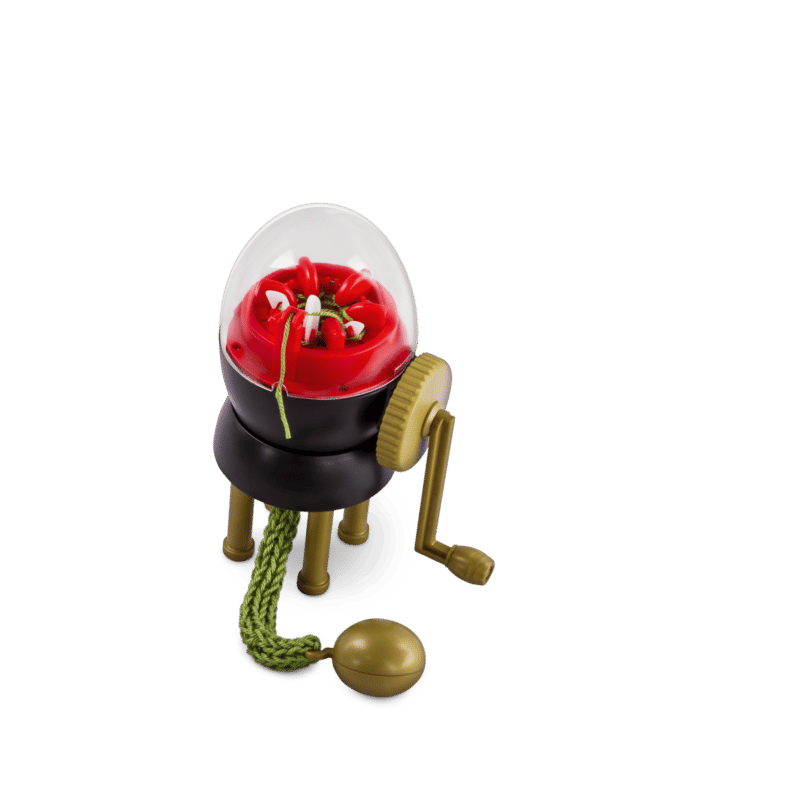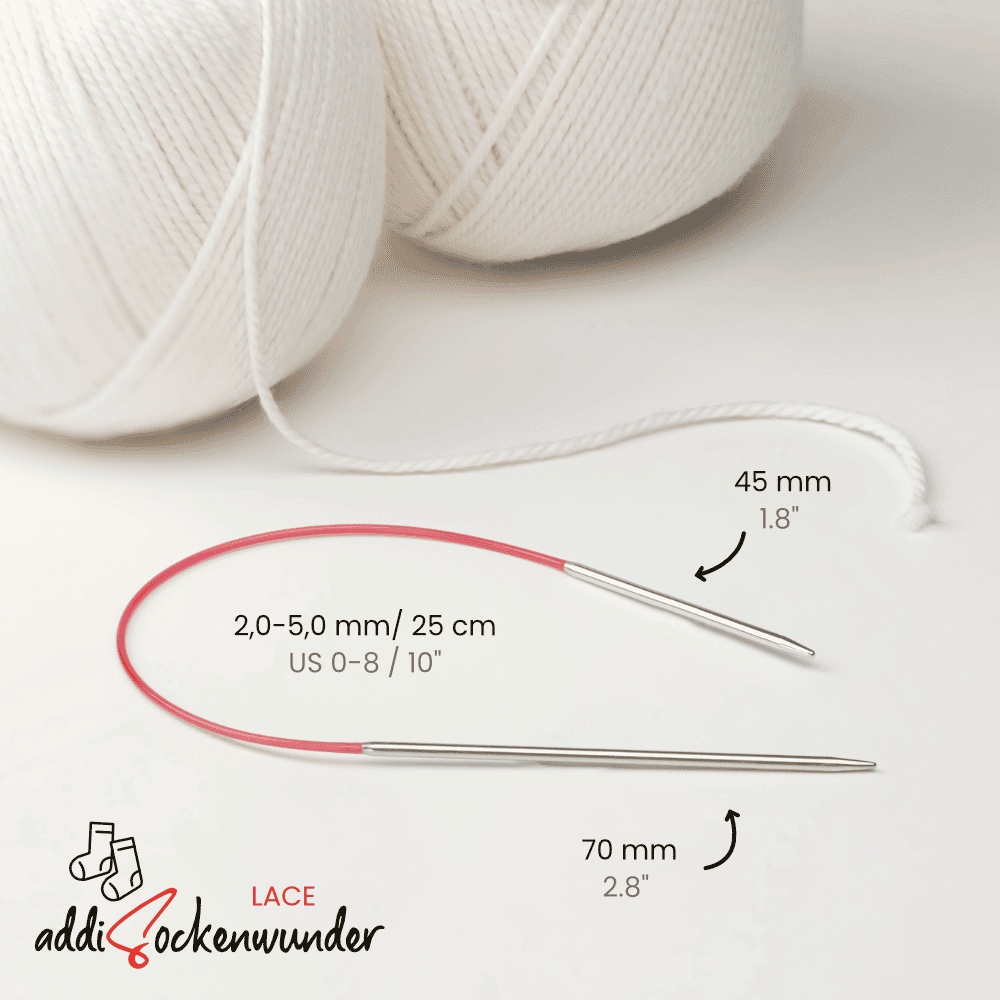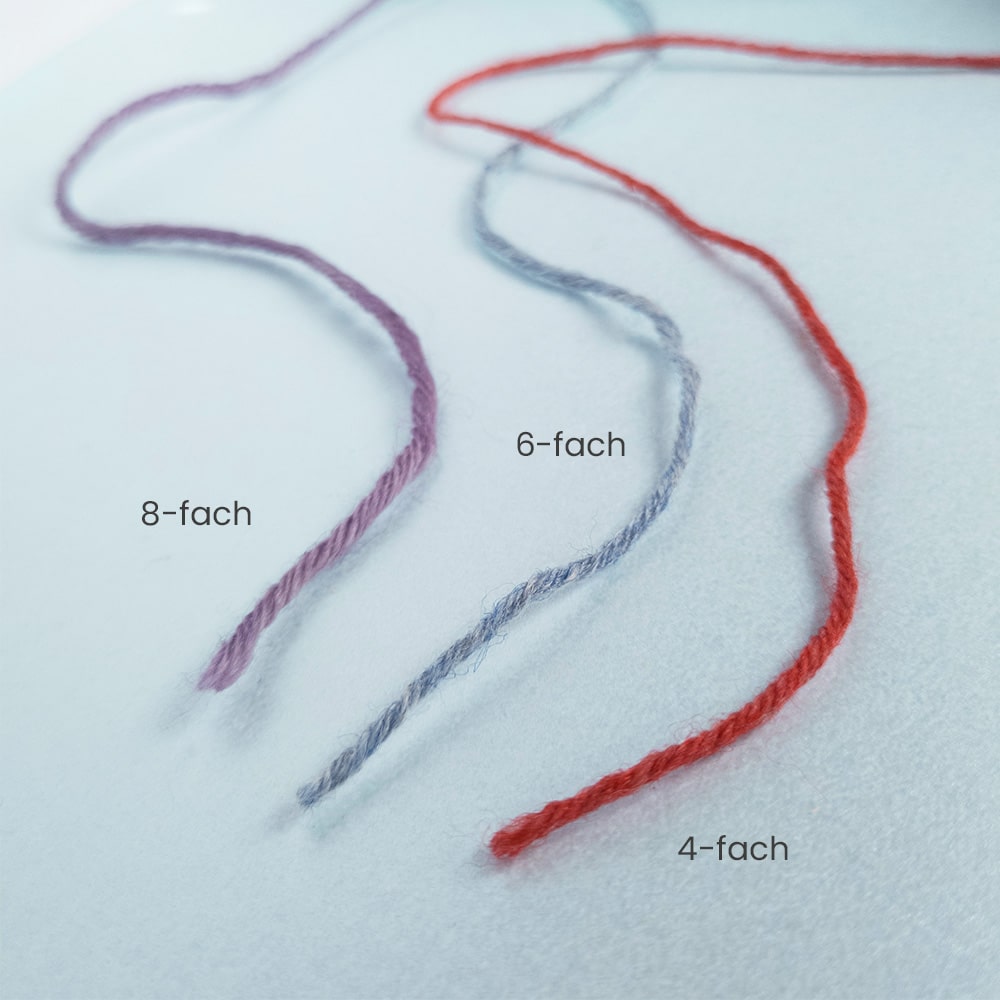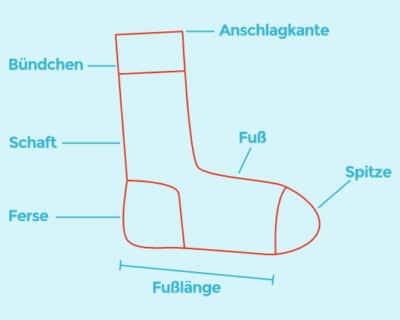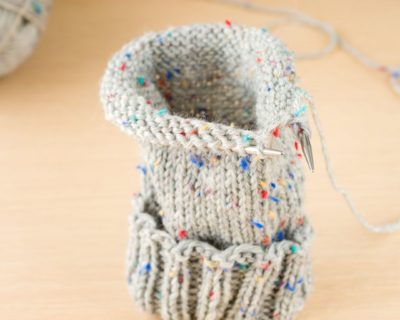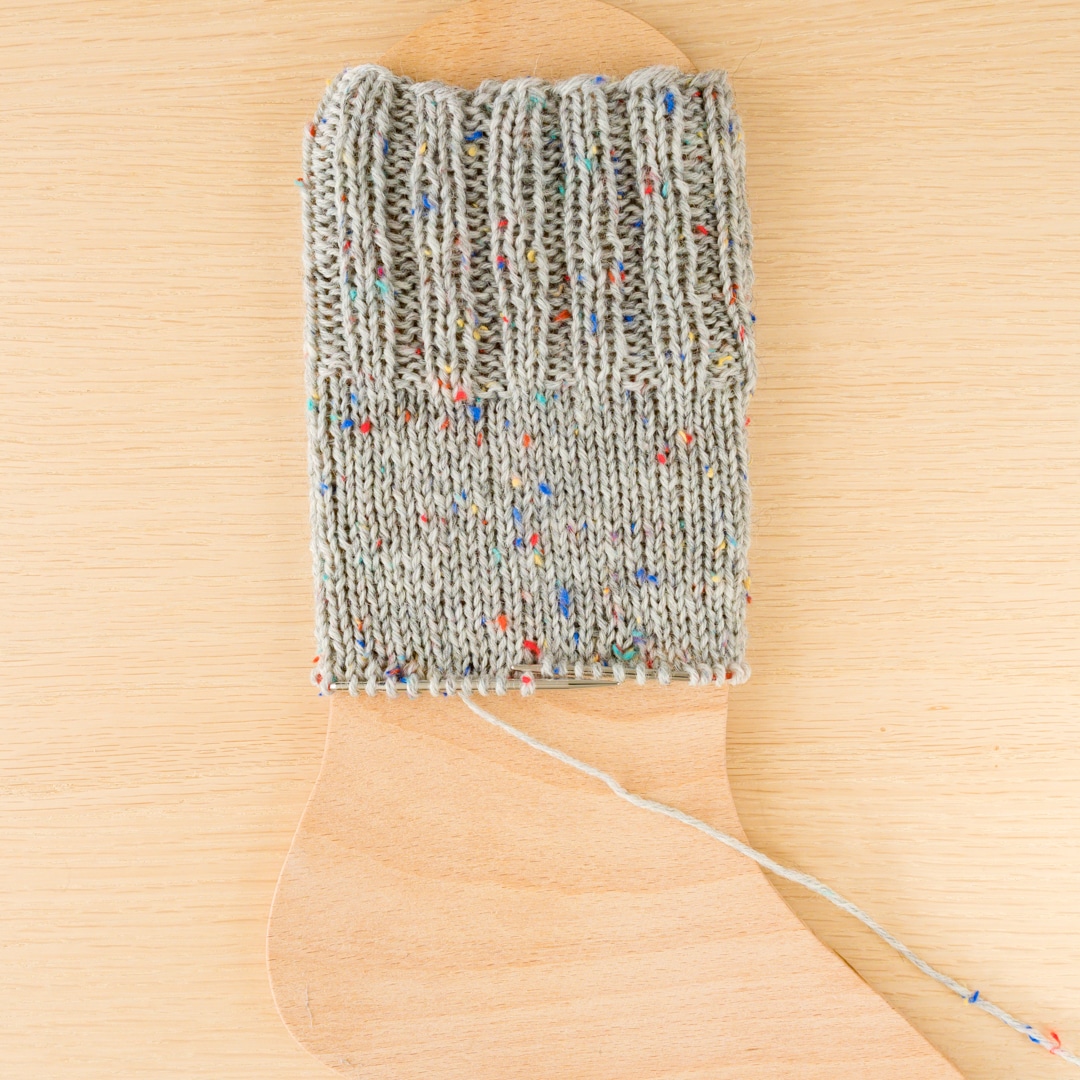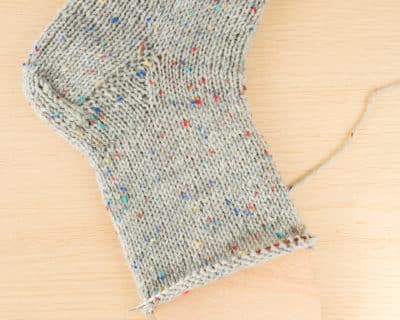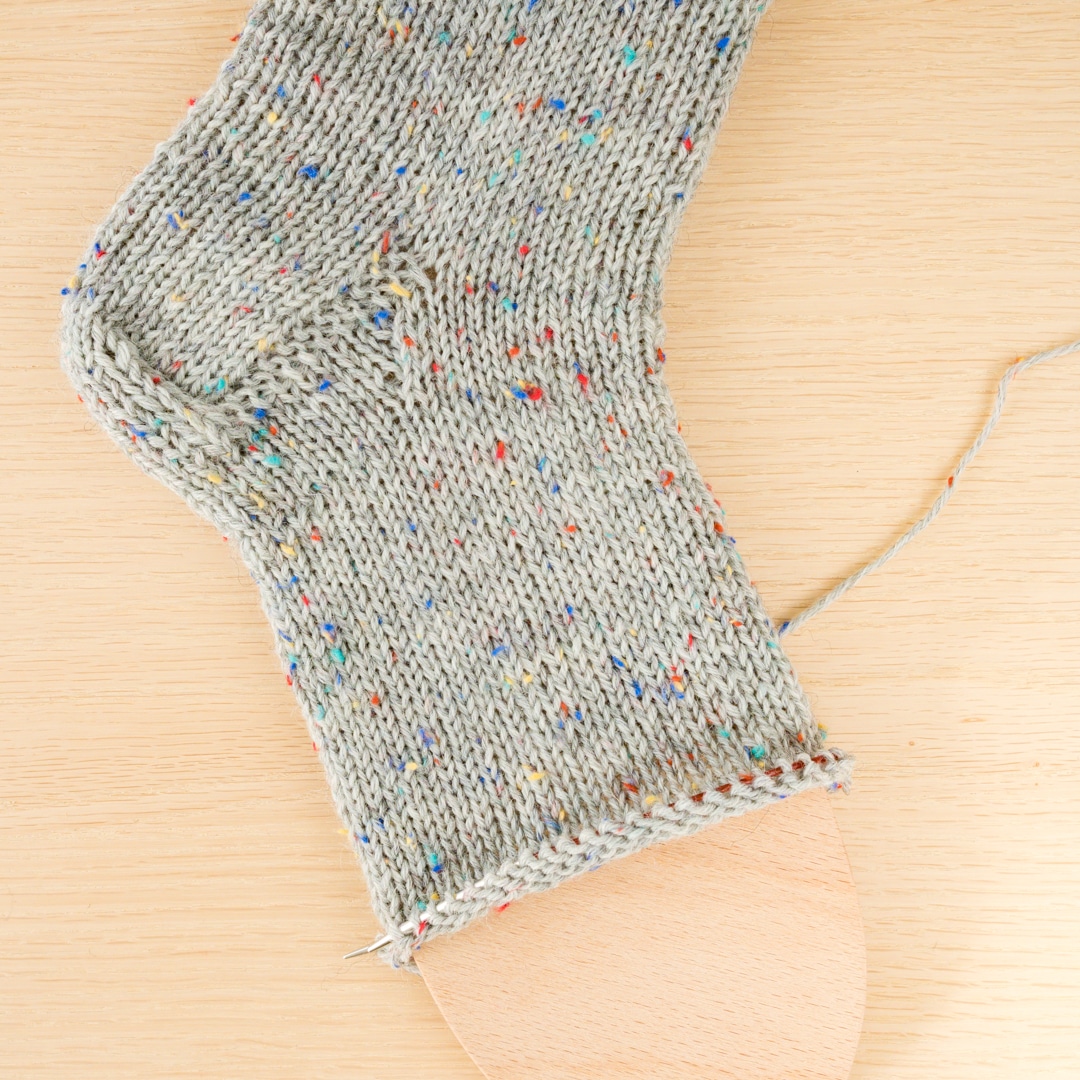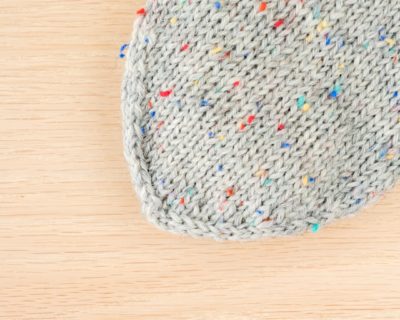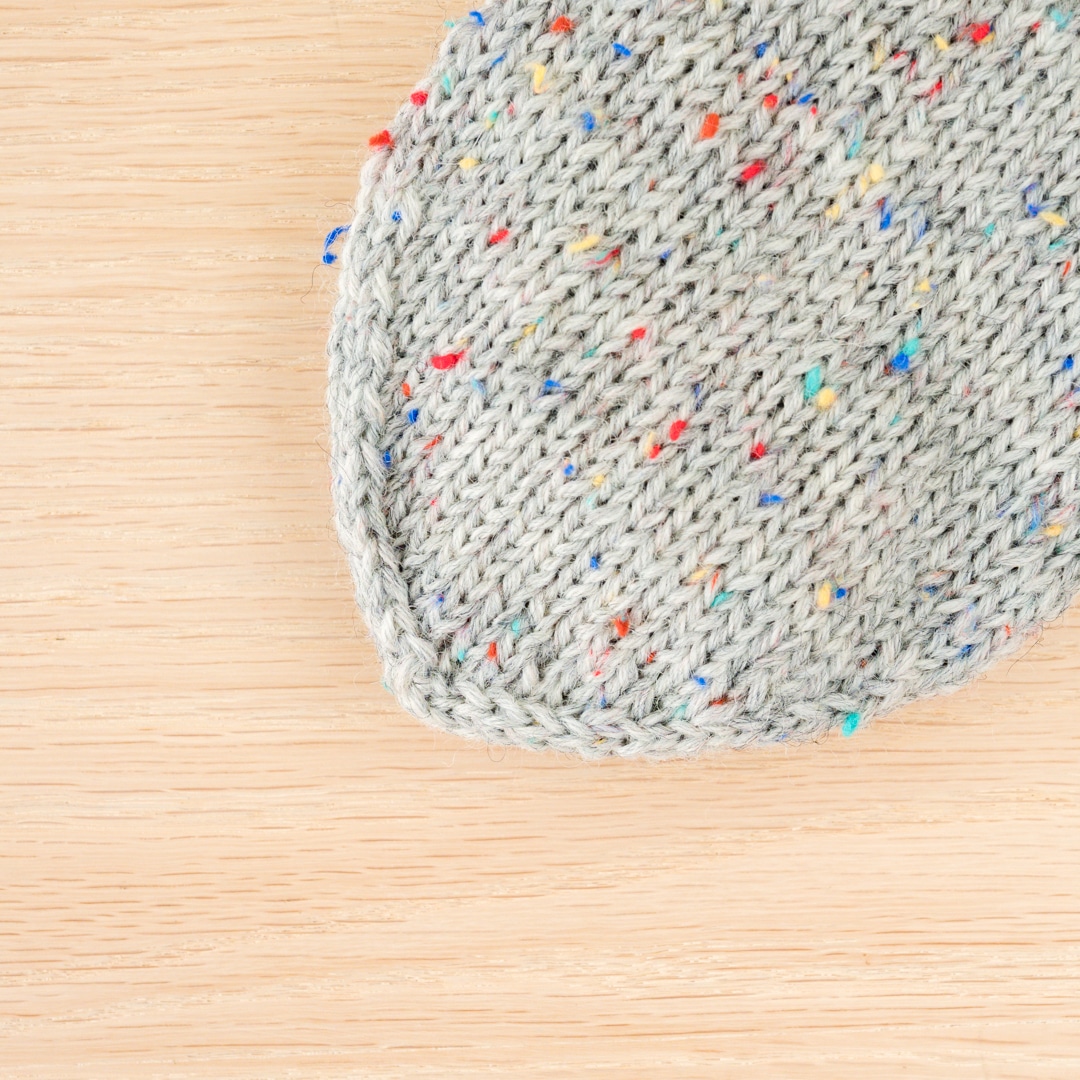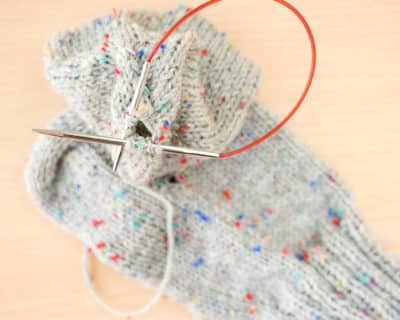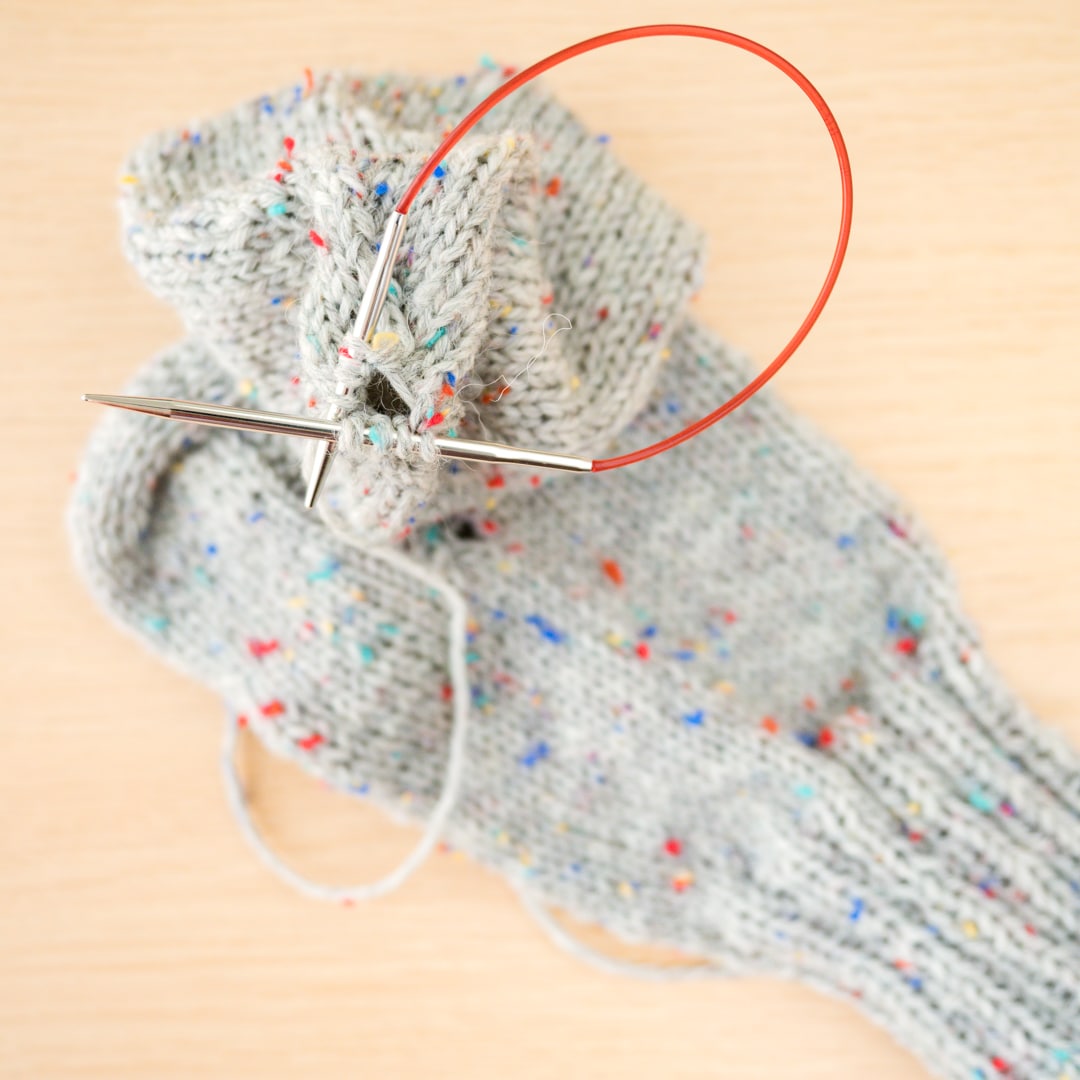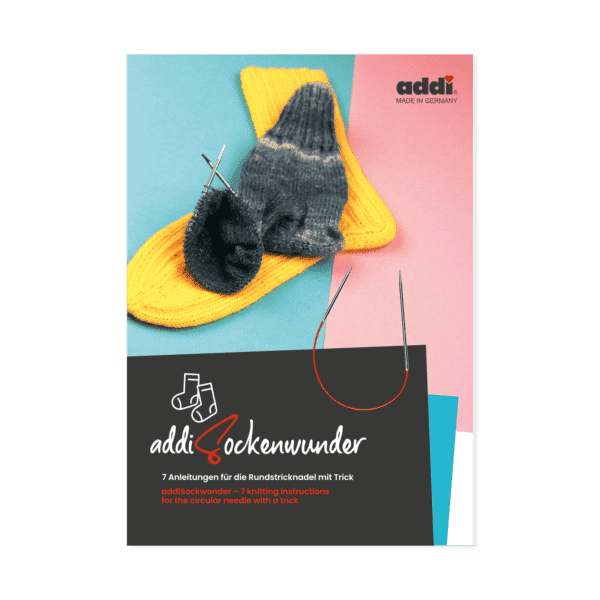Knitting socks with circular knitting needles: addiSockwonder
Instructions for knitting socks with circular knitting needles for beginners. addiSockwonder, the mini circular knitting needle for everything small.
With a 70 mm Lace tip and a 45 mm Basic tip, it’ s much easier to knit socks with a circular knitting needle.
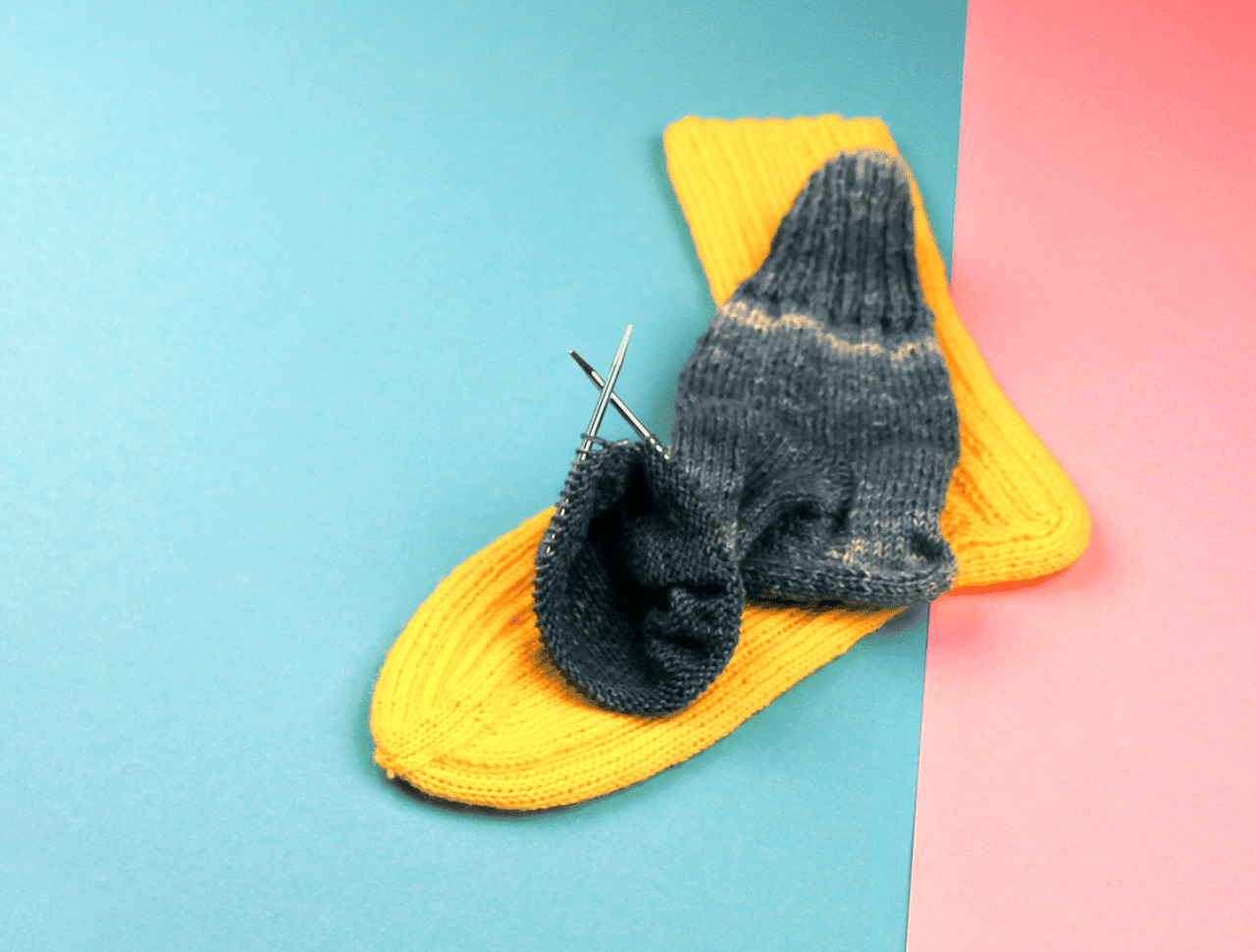
- Sock yarn 4-ply, 6-ply or 8-ply
- addiSockwonder – Sockenstricknadel in passender Stärke zum Garn
- optional stitch marker
- Scissors
- darning needle
What is the sockwonder?
The small circular knitting needle ” addiSockwonder” is an extra short circular knitting needle for knitting socks – measured from tip to tip a whole 25 cm long. The special feature of the needle: one needle point is 45 mm long, the other 70 mm. Due to the different lengths of the tips, it is possible to knit small rounds. With the longer needle point the stitches are knitted.
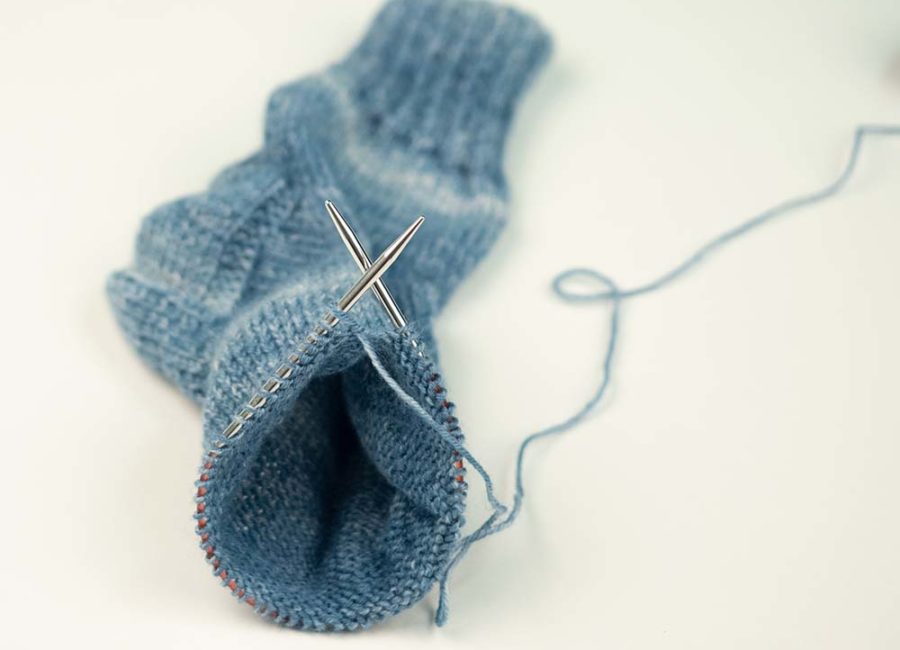
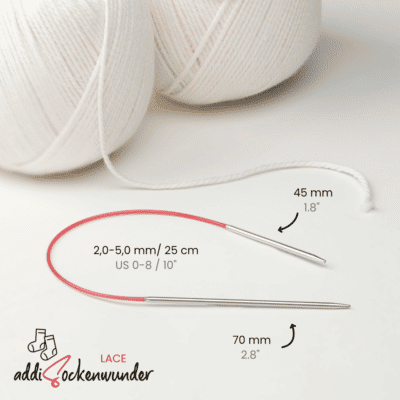
What is the sockwonder?
The small circular knitting needle ” addiSockwonder” is an extra short circular knitting needle for knitting socks – measured from tip to tip a whole 25 cm long. The special feature of the needle: one needle point is 45 mm long, the other 70 mm. Due to the different lengths of the tips, it is possible to knit small rounds. With the longer needle point the stitches are knitted.
Which wool do I need to knit socks with circular needles?
Sock yarns come in three different strengths:
- 4-ply
- 6-ply
- 8-ply
The designation means that 4, 6 or 8 very thin threads have been spun into one yarn. Therefore, 8-ply sock wool is about twice as strong as the 4-ply version.
The regular sock yarns are usually 4-ply, but 6-ply yarns for thicker socks can also be found in many shops.
8-ply sock yarns are rarer to get. Because of their thickness, these are used more for house socks, as the socks are knitted very quickly but do not fit well in shoes.

Which wool do I need to knit socks with circular needles?
Sock yarns come in three different strengths:
- 4-ply
- 6-ply
- 8-ply
The designation means that 4, 6 or 8 very thin threads have been spun into one yarn. Therefore, 8-ply sock wool is about twice as strong as the 4-ply version.
The regular sock yarns are usually 4-ply, but 6-ply yarns for thicker socks can also be found in many shops.
8-ply sock yarns are rarer to get. Because of their thickness, these are used more for house socks, as the socks are knitted very quickly but do not fit well in shoes.
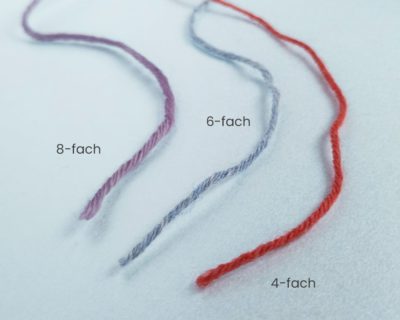
Attributes of the different sock-wool qualities:
4-ply
- Sock yarns come in three different strengths.
- 4-ply is the standard yarn for socks. It is the thinnest sock yarn, which is why it is also knitted with fine needles (needle size 2.5 - 3.0 mm), so that the sock is tight.
- Due to a higher number of stitches (see sock chart 4-ply) needed to knit your corresponding shoe size according to the sock chart, you will need a little longer than with a thicker yarn.
- Advantage: of 4-ply sock wool: The socks can be worn in all shoes because they are rather thin.
- For a pair of socks you usually need about 100g of sock wool (up to size 46). This usually corresponds to one ball.
6-ply
- Sock yarns come in three different strengths.
- The 6-ply yarn is a medium weight for somewhat thicker socks. It can be knitted with needle size 3.0 - 4.0 mm.
- Advantage: Due to its strength, fewer stitches are needed (see sock chart 6-ply) and knitting socks is a little faster - ideal for beginners.
- For a pair of socks you usually need about 150g of sock wool (up to size 46). This usually corresponds to one ball.
8-ply
- Sock yarns come in three different strengths.
- The 8-ply yarn is the thickest quality and particularly suitable for home socks that are not worn in shoes. It can be knitted with a needle size of 4.0 - 5.0 mm.
- Advantage: With the thick sock wool, even large socks can be knitted particularly quickly.
- For a pair of socks you usually need 150g of sock wool (up to size 42) and approx. 200g (up to size 46). A ball usually contains 150g.
How it works
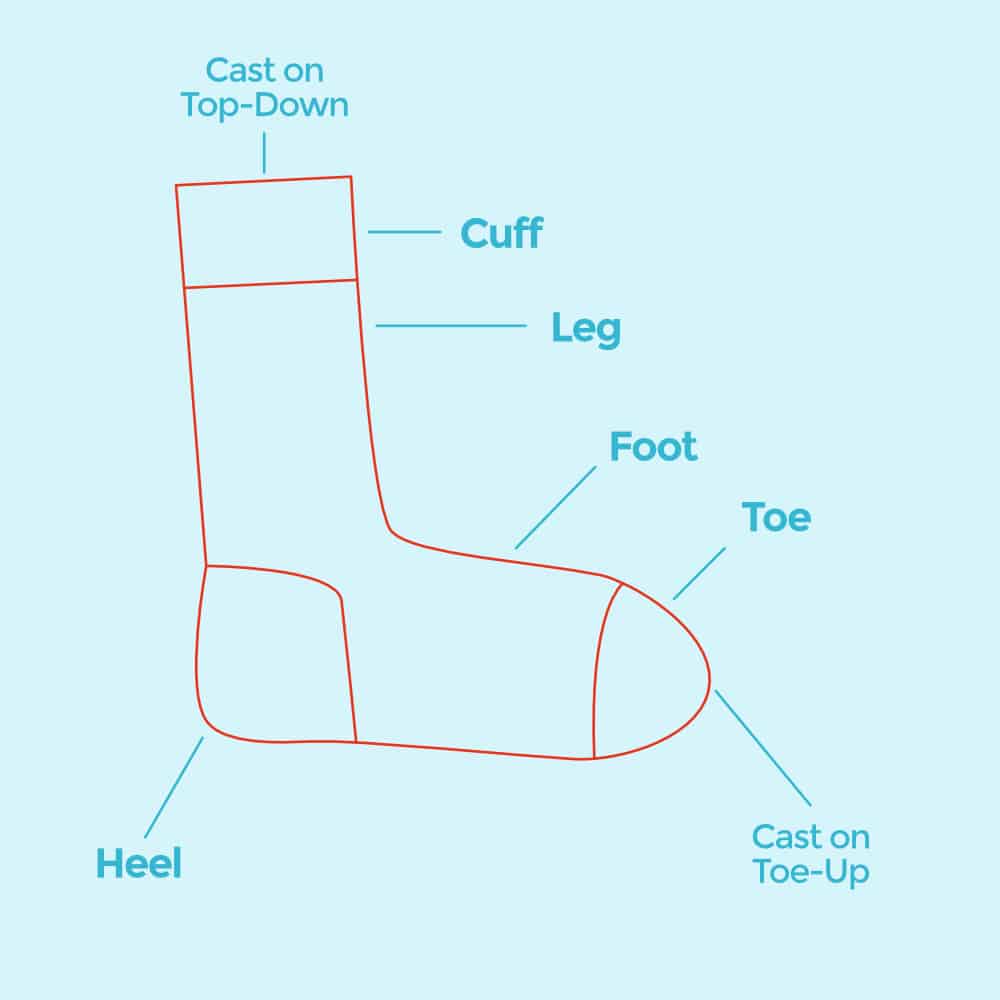
How it works
Sock chart Top-Down
(from the cuff to the toe)
Sock chart Top-Down 4-ply:
- Sock wool 4‐ply (420m, 100g) (384 yd, 3.5 oz)
- Gauge: 30 stitches/ 42 rows = 4″x4″ (10×10 cm)
| Shoe size EU | 17/18 | 19/20 | 20/21 | 22/23 | 24/25 | 26/27 | 28/29 | 30/31 | 32/33 | 34/35 | 36/37 | 38/39 | 40/41 | 42/43 | 44/45 | 46/47 | 48/49 |
| Stitches total CO | 36 | 36 | 40 | 40 | 44 | 48 | 48 | 52 | 52 | 56 | 56 | 60 | 60 | 64 | 68 | 72 | 76 |
Sock chart Top-Down 6-ply:
- Sock wool 6‐ply (380m, 150g) (347 yd, 5.3 oz)
- Gauge: 22 stitches/ 30 rows = 4″x4″ (10×10 cm)
| Shoe size EU | 17/18 | 19/20 | 20/21 | 22/23 | 24/25 | 26/27 | 28/29 | 30/31 | 32/33 | 34/35 | 36/37 | 38/39 | 40/41 | 42/43 | 44/45 | 46/47 | 48/49 |
| Stitches total CO | 28 | 28 | 32 | 32 | 36 | 36 | 40 | 40 | 44 | 44 | 48 | 48 | 52 | 52 | 56 | 56 | 60 |
Sock chart Top-Down 8-ply:
- Sock wool 8‐ply (300m, 150g) (274 yd, 5.3 oz)
- Gauge: 20 stitches/ 28 rows = 4″x4″ (10×10 cm)
| Shoe size EU | 17/18 | 19/20 | 20/21 | 22/23 | 24/25 | 26/27 | 28/29 | 30/31 | 32/33 | 34/35 | 36/37 | 38/39 | 40/41 | 42/43 | 44/45 | 46/47 | 48/49 |
| Stitches total CO | 24 | 24 | 28 | 28 | 32 | 32 | 36 | 36 | 40 | 40 | 44 | 44 | 48 | 48 | 52 | 52 | 56 |
Knitting cuff and shaft
- Cast on the required number of stitches according to the table and divide the stitches according to the needles used.
- That means: with **Sockwonder** all stitches are on your one small circular needle – it is best to mark the start of the round with a stitch marker -, with **addiCraSyTrio** half of your stitches are on each of the two trio needles, with **double pointed needles** four needles each holding a quarter of your stitches.
- So that the cast-on stitches do not become too tight, you can hold two parallel needles in your right hand for the cast-on. When your are ready to start knitting, you simply pull a needle out again. Now you can work in rounds. When merging the first round, be careful not to twist anything.
- Knit the cuff and the shaft in the desired pattern and length. In the graphic above we have marked what the individual parts of the sock are called.
- You determine the length of the shaft yourself. A rule says that the shaft, including the cuffs and heel flap, is about as long as the foot (the foot length is in the table). For a better fit, the cuff pattern can also be continued over the shaft. After the shaft is worked the heel; on the sock wonder can be worked any heel.


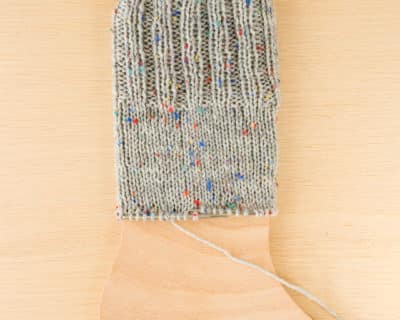
Knitting cuff and shaft
- Cast on the required number of stitches according to the table and divide the stitches according to the needles used.
- That means: with **Sockwonder** all stitches are on your one small circular needle – it is best to mark the start of the round with a stitch marker -, with **addiCraSyTrio** half of your stitches are on each of the two trio needles, with **double pointed needles** four needles each holding a quarter of your stitches.
- So that the cast-on stitches do not become too tight, you can hold two parallel needles in your right hand for the cast-on. When your are ready to start knitting, you simply pull a needle out again. Now you can work in rounds. When merging the first round, be careful not to twist anything.
- Knit the cuff and the shaft in the desired pattern and length. In the graphic above we have marked what the individual parts of the sock are called.
- You determine the length of the shaft yourself. A rule says that the shaft, including the cuffs and heel flap, is about as long as the foot (the foot length is in the table). For a better fit, the cuff pattern can also be continued over the shaft. After the shaft is worked the heel; on the sock wonder can be worked any heel.

Knitting the heel
The heel is worked after the cuff; any heel can be worked on the Sockwonder.
We explain how to do this in the instructions for the classic heel and boomerang heel.

Knitting the heel
The heel is worked after the cuff; any heel can be worked on the Sockwonder.
We explain how to do this in the instructions for the classic heel and boomerang heel.
Fußteil stricken
When you have finished the heel, the foot part is knitted. This can be worked in stockinette stitch or with a pattern. Work your foot part as long as required for your shoe size according to the chart.
- Now you are working the foot in rounds until the desired length (see chart) is reached.
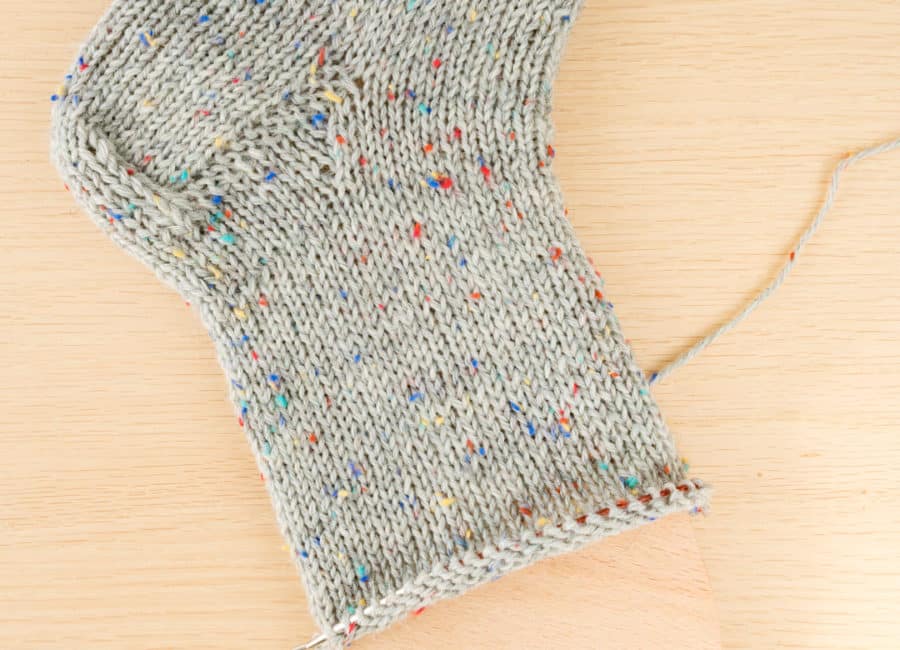

Fußteil stricken
When you have finished the heel, the foot part is knitted. This can be worked in stockinette stitch or with a pattern. Work your foot part as long as required for your shoe size according to the chart.
- Now you are working the foot in rounds until the desired length (see chart) is reached.

Knitting a toe
Finally, a sock toe is worked. On the sock wonder all toes are possible. In the end, because of the few stitches on the needle, it is necessary to knit with the technique of the Wonder loop or switch to DPN or Trio (FlexiFlips). The two most famous laces are presented here.
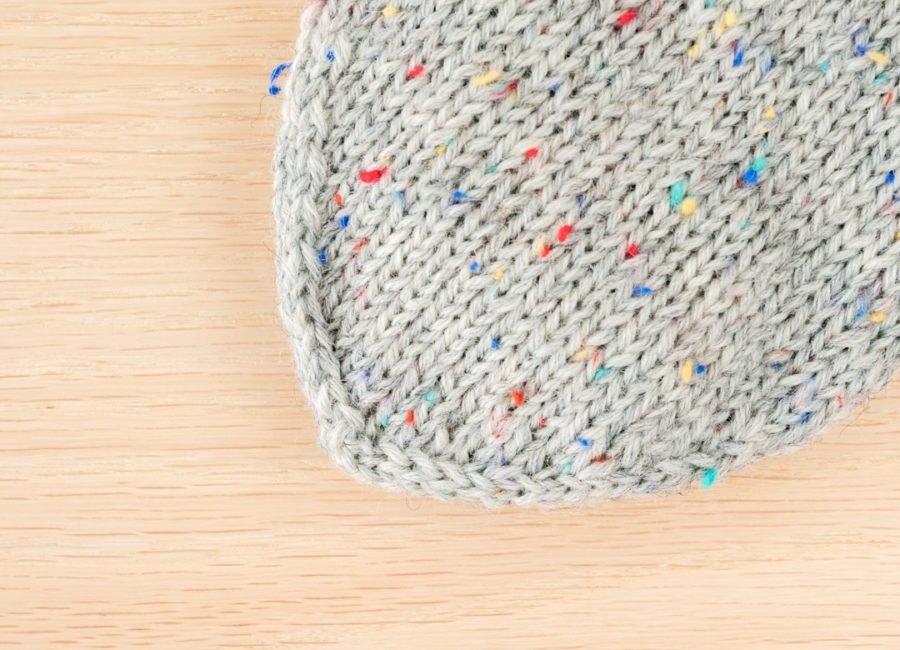
Knitting a toe
Finally, a sock toe is worked. On the sock wonder all toes are possible. In the end, because of the few stitches on the needle, it is necessary to knit with the technique of the Wonder loop or switch to DPN or Trio (FlexiFlips). The two most famous laces are presented here.
Tip: Knit from the cuff to the toe only with the addiSockwunder.



